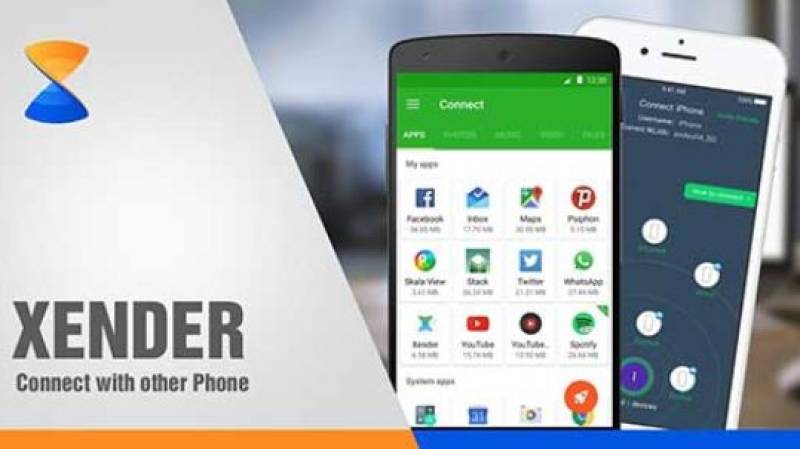Introduction
In an era where data sharing is an integral part of our daily lives, having a reliable and fast file-sharing tool is crucial. Xender, a popular cross-platform file-sharing application, has emerged as a go-to solution for users seeking a seamless way to transfer files between devices. This article explores the features, functionality, and benefits of Xender, shedding light on why it has become a preferred choice for millions of users worldwide.
- Overview of Xender
Xender is a free file-sharing application that enables users to transfer a wide variety of files, including photos, videos, music, apps, and more, between different devices. Available on both Android and iOS platforms, Xender supports cross-platform sharing, allowing users to exchange files effortlessly between devices running on different operating systems.
- Key Features
a. High-Speed Transfer: One of Xender’s standout features is its high-speed file transfer capabilities. The application utilizes Wi-Fi technology to create a direct connection between devices, enabling users to transfer large files at speeds that surpass traditional methods like Bluetooth.
b. Cross-Platform Compatibility: Xender breaks down the barriers between different operating systems, allowing users to share files between Android and iOS devices seamlessly. This feature is particularly valuable in a world where users often own devices running on different platforms.
c. No Internet Connection Required: Xender operates without the need for an active internet connection. By utilizing Wi-Fi Direct technology, the application establishes a direct connection between devices, ensuring that users can share files even in areas with limited or no internet access.
d. Group Sharing: Xender facilitates group file sharing, making it ideal for collaborative projects or sharing content during events. Users can connect multiple devices simultaneously, streamlining the sharing process and saving time.
e. File Manager: Xender includes a built-in file manager that allows users to organize, view, and manage their files directly within the application. This feature enhances the overall user experience by providing a centralized hub for all shared content.
- How to Use Xender
Using Xender is straightforward:
a. Download and Install: Begin by downloading and installing the Xender app on your device from the respective app store.
b. Open the App: Launch the Xender app on both the sending and receiving devices.
c. Connect Devices: On the sending device, select the files you want to share and click “Send.” On the receiving device, click “Receive” to initiate the connection.
d. Transfer Files: Once the devices are connected, the file transfer will commence. Users can monitor the progress of the transfer in real-time.
- Security and Privacy
Xender prioritizes the security and privacy of its users. The direct device-to-device connection ensures that files are transferred without passing through any external servers, reducing the risk of data interception. Additionally, Xender allows users to set a password for their shared files, adding an extra layer of protection.
The Genesis of Xender
Embark on a journey through the inception of Xender, tracing its roots to the ever-evolving landscape of digital technology. Learn how it evolved to become the go-to solution for file-sharing enthusiasts worldwide.
Xender’s Intuitive Interface
Navigating through Xender is a breeze, thanks to its user-friendly interface. Explore how its intuitive design enhances the overall user experience, making file-sharing a seamless and enjoyable process.
Lightning-Speed Transfers
One of Xender’s standout features is its rapid file transfer capabilities. Dive into the mechanics of this lightning-speed technology and understand how Xender sets the benchmark for quick and efficient data transfers.
Xender in Action: Real-Life Experiences
Personal Anecdotes: A User’s Perspective
Discover firsthand experiences of users who have incorporated Xender into their daily lives. From business professionals to students, Xender’s impact spans across diverse demographics.
Industry Applications
Explore the myriad ways Xender is utilized across different industries. From simplifying collaborative projects to enhancing productivity, Xender proves to be an invaluable asset.
FAQs About Xender
How Secure is Xender for File Sharing?
Xender employs robust encryption protocols, ensuring your files remain secure during transfers. Learn more about the app’s commitment to user privacy.
Can Xender Handle Large File Transfers?
Absolutely! Xender’s high-speed transfer capabilities are not limited by file size, making it the ideal choice for transferring large documents, videos, and more.
Is Xender Compatible with Multiple Devices?
Yes, Xender is cross-platform compatible, supporting seamless file transfers between Android and iOS devices, as well as between smartphones and computers.
Does Xender Consume a Lot of Data?
Contrary to its speed, Xender is frugal with data consumption. Discover how it optimizes data usage while maintaining swift file transfers.
Are There Any Subscription Charges for Xender?
No, Xender is a free-to-use application. Uncover the details of its freemium model and the additional benefits available to premium users.
How Does Xender Ensure Data Integrity?
Xender prioritizes data integrity through checksum verification. Explore how this feature guarantees the accuracy and completeness of your transferred files.
Conclusion
Xender has earned its reputation as a reliable and efficient file-sharing solution, catering to the needs of users who value speed, convenience, and cross-platform compatibility. Whether you are sharing photos with friends, collaborating on a project, or simply transferring files between your own devices, Xender simplifies the process with its user-friendly interface and robust features. As technology continues to evolve, Xender remains a key player in the realm of file sharing, providing users with a versatile and dependable tool for their digital connectivity needs.

